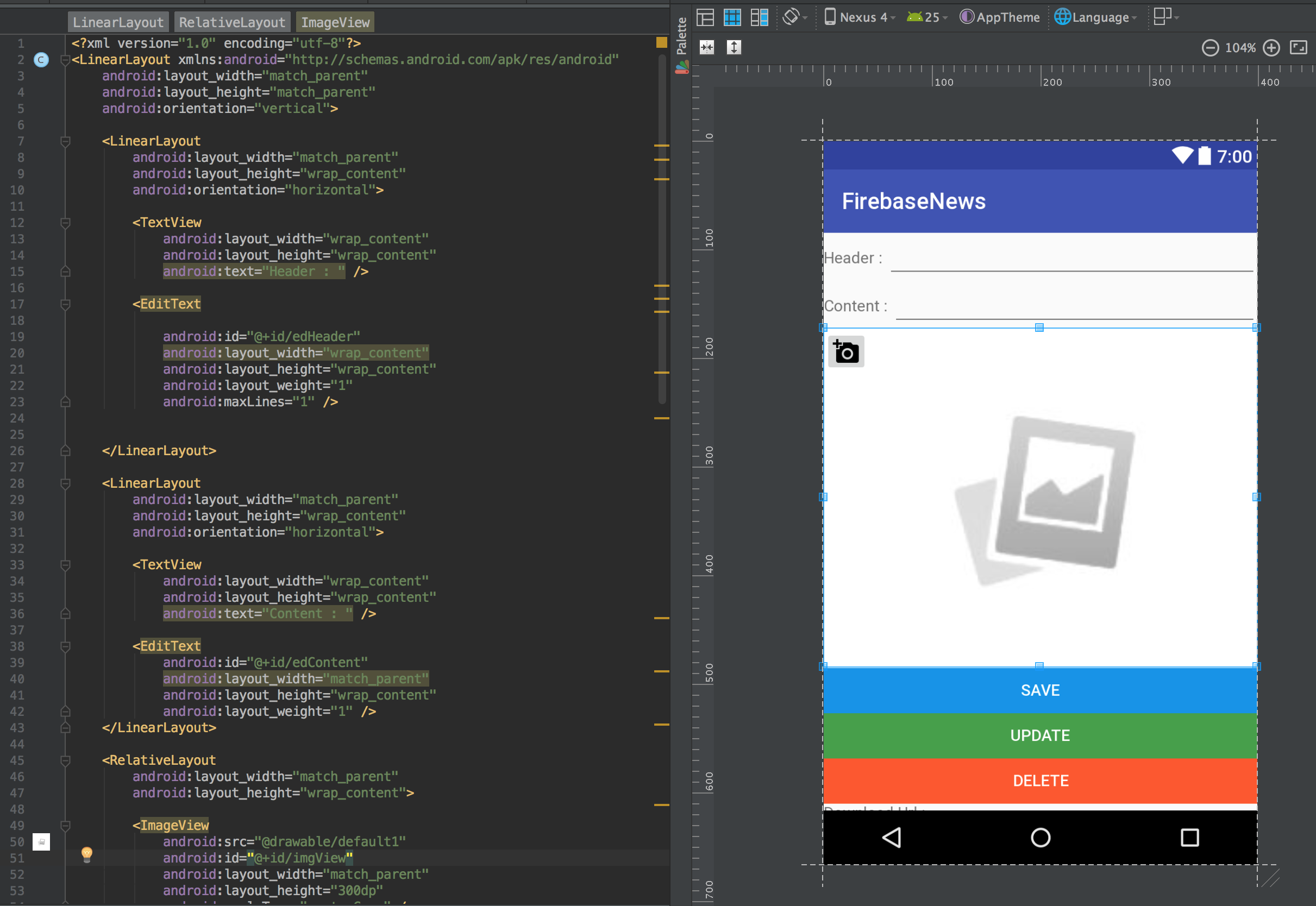


Begin by dragging, dropping, positioning and sizing the widgets on the layout canvas so that the layout resembles that shown in Figure 25-1: The completed layout for the user interface is going to consist of a ListView, a Plain Text EditText and three Button views. Before adding any components to the view, turn off Autoconnect mode. Begin by selecting and deleting the default “Hello World!” TextView widget so that the layout canvas is blank. Once Android Studio has finished creating the new project, locate the activity_realtime_dblist.xml layout file and load it into the layout editor. Review these changes before clicking on the Accept Changes button. Once selected, click on the Save and retrieve data link followed by the Connect to Firebase button followed by the Add the Realtime Database to your app button once the connection has been established.Ī dialog will appear listing the changes that will be made to the project build files to add realtime database support to the project. To add Firebase Realtime Database support, select the Tools -> Firebase menu option and click on the Realtime Database entry in the resulting Firebase assistant panel. Configuring the Project for Realtime Database Accessīefore code can be written to make use of the realtime database, some library dependencies need to be added to the build configuration.


 0 kommentar(er)
0 kommentar(er)
